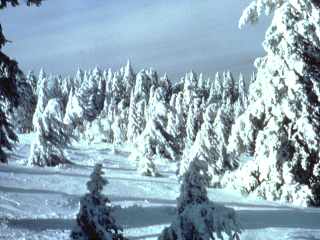7.6.1: Subarctic Climate
- Page ID
- 21728
\( \newcommand{\vecs}[1]{\overset { \scriptstyle \rightharpoonup} {\mathbf{#1}} } \)
\( \newcommand{\vecd}[1]{\overset{-\!-\!\rightharpoonup}{\vphantom{a}\smash {#1}}} \)
\( \newcommand{\id}{\mathrm{id}}\) \( \newcommand{\Span}{\mathrm{span}}\)
( \newcommand{\kernel}{\mathrm{null}\,}\) \( \newcommand{\range}{\mathrm{range}\,}\)
\( \newcommand{\RealPart}{\mathrm{Re}}\) \( \newcommand{\ImaginaryPart}{\mathrm{Im}}\)
\( \newcommand{\Argument}{\mathrm{Arg}}\) \( \newcommand{\norm}[1]{\| #1 \|}\)
\( \newcommand{\inner}[2]{\langle #1, #2 \rangle}\)
\( \newcommand{\Span}{\mathrm{span}}\)
\( \newcommand{\id}{\mathrm{id}}\)
\( \newcommand{\Span}{\mathrm{span}}\)
\( \newcommand{\kernel}{\mathrm{null}\,}\)
\( \newcommand{\range}{\mathrm{range}\,}\)
\( \newcommand{\RealPart}{\mathrm{Re}}\)
\( \newcommand{\ImaginaryPart}{\mathrm{Im}}\)
\( \newcommand{\Argument}{\mathrm{Arg}}\)
\( \newcommand{\norm}[1]{\| #1 \|}\)
\( \newcommand{\inner}[2]{\langle #1, #2 \rangle}\)
\( \newcommand{\Span}{\mathrm{span}}\) \( \newcommand{\AA}{\unicode[.8,0]{x212B}}\)
\( \newcommand{\vectorA}[1]{\vec{#1}} % arrow\)
\( \newcommand{\vectorAt}[1]{\vec{\text{#1}}} % arrow\)
\( \newcommand{\vectorB}[1]{\overset { \scriptstyle \rightharpoonup} {\mathbf{#1}} } \)
\( \newcommand{\vectorC}[1]{\textbf{#1}} \)
\( \newcommand{\vectorD}[1]{\overrightarrow{#1}} \)
\( \newcommand{\vectorDt}[1]{\overrightarrow{\text{#1}}} \)
\( \newcommand{\vectE}[1]{\overset{-\!-\!\rightharpoonup}{\vphantom{a}\smash{\mathbf {#1}}}} \)
\( \newcommand{\vecs}[1]{\overset { \scriptstyle \rightharpoonup} {\mathbf{#1}} } \)
\( \newcommand{\vecd}[1]{\overset{-\!-\!\rightharpoonup}{\vphantom{a}\smash {#1}}} \)

Geographic Distribution
The subarctic climate, class Ds, Df or Dw, is only found in the Northern Hemisphere because there is no large landmass at the same latitude in the Southern Hemisphere. Vast expanses of the subarctic climate stretch across northern North America from Newfoundland to Alaska. Subarctic climate is found in northern Eurasia from Scandinavia through most of Siberia.
Distinguishing Characteristics
Temperature
The subarctic climate has brief, cool summers and bitterly cold winters. The subarctic experiences the lowest temperatures outside of Antarctica, and the largest annual temperature range of any climate. Though the summer is short, the day length is quite long with June days lasting 18.8 hrs at 60oN. Daytime temperatures can rise above 25oC (77oF), while dropping to 10oC (50oF) during the evening. The freeze free period is of course short, being only three months long. However, a freeze can occur in any month.
Precipitation
Total annual precipitation in the subarctic is fairly small, amounting to no more than 380 mm (15 in) to 500 mm (21 in) over the year. Most of the precipitation is cyclonic in origin and concentrated during the warmer months (except along coasts) where air masses are more humid. The extremely cold temperatures, coupled with the subsidence of the Polar High, are responsible for the meager precipitation that falls during the winter.

